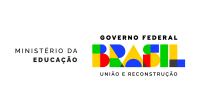Housewife Maria Aparecida, 41, knows the importance of breastfeeding. While waiting for care at Anita, a unit at the Santos Dumont Institute (ISD), a reference in maternal and child health, she offers her breast to her daughter Maria Cecília, aged 2 years and 2 months. The World Health Organization (WHO) recommendation is that children be breastfed until at least 2 years of age, even with the introduction of solid foods. Aparecida wants to go further: “I hope Cecília breastfeeds until she is at least 3 (years old)”.
Little Alícia, 2 months old, usually wakes her mother Adeilza de Oliveira, 28 years old, twice a night to feed. “Usually, she breastfeeds around 1:30 am and 5 am, then goes back to sleep. I try to create a breastfeeding routine for her throughout the day and at night too”, says Adeilza as she feeds her daughter once again.
Human milk should be the only food for babies up to 6 months, says the WHO. It has multiple nutritional and immunological benefits that favor the child's development. Furthermore, is capable of reducing the deaths of children under 5 years of age from preventable causes, reducing the occurrence of diarrhea, perinatal conditions and infections, the main causes of death in newborns.
However, for many mothers and babies the lactation process is not always simple and can pose some challenges, ranging from low milk production to pain during breastfeeding. The ISD nurse preceptor, Monise Pontes, states that there are techniques that simplify and facilitate the process of feeding babies.
“This difficulty is normal, as the mother is learning to breastfeed and the baby is learning to breastfeed. We recommend that breastfeeding women create an environment with lower light and less noise, especially in the first days of breastfeeding. Furthermore, it is important that the mother is in a comfortable position, with her back well supported, and positioning the child's body in the same direction, preferably belly to belly, to allow him to swallow the milk more easily”, explains the nurse.
Another point that must be observed is the child's 'latching', which is important to avoid creating cracks or bruises on the nipple, according to Monise: “The child must grasp most of the areola (darker part of the breast) and the lips must be turned out, providing correct suction and preventing the appearance of injuries that cause pain in the mother.”
Even so, if difficulties in breastfeeding persist, “it is important that the mother seeks professional help so that she does not give up breastfeeding due to an issue that can be resolved”, reinforces the professional.
World Breastfeeding Week and Golden August

As a way to encourage and discuss breastfeeding, the WHO and the United Nations Children's Fund (Unicef) promote, between the 1st and 7th of August, World Breastfeeding Week.
The theme for 2024 is “Breastfeeding: support in all situations” and aims to highlight the needs to improve breastfeeding support, with a focus on reducing inequalities and the practice of breastfeeding in times of crisis. The choice is in line with Sustainable Development Goals (SDGs) listed by the United Nations (UN).
In Brazil, the proposal is extended throughout the month through the “Golden August” campaign, which seeks to debate policies that value women and breastfeeding, in addition to promoting respect for the right to breastfeed anytime and anywhere. .
At ISD, awareness activities on the topic are constant. Pregnant and postpartum women participate in the “Maternar” and “Arte de Crescer” groups, permanent education spaces where topics related to pregnancy and the first months and years of children's lives are discussed.
“From the moment the child is born, the mother needs to be prepared to breastfeed at that moment. So, we saw that it was necessary to prepare these mothers to reduce the chances of giving up breastfeeding. Therefore, the preparation of mothers is essential so that they are prepared for this moment”, concludes Monise.
Myths and Truths about breastfeeding
Myths
- Breastfeeding always hurts: Breastfeeding may cause discomfort at first, but persistent pain indicates that something is wrong, such as an incorrect latch.
- Those with small breasts produce less milk: Breast size does not influence the amount of milk produced.
- Weak breast milk: There is no such thing as “weak breast milk”. Breast milk contains all the nutrients needed by the baby.
Truths
- Breastfeeding can protect against diseases: Breast milk contains antibodies that help protect the baby from many diseases.
- Breastfeeding strengthens the bond between mother and child: Physical contact during breastfeeding helps strengthen the emotional bond between mother and baby.
- Breastfeeding can be difficult at first: Many mothers struggle at first, but with the right support, most problems can be resolved.
About ISD
The Santos Dumont Institute (ISD) is a Social Organization linked to the Ministry of Education (MEC) and includes the Edmond and Lily Safra International Neuroscience Institute and the Anita Garibaldi Center for Health Education and Research, both in Macaíba. ISD's mission is to promote education for life, forming citizens through integrated teaching, research and extension actions, in addition to contributing to a fairer and more humane transformation of Brazilian social reality.















